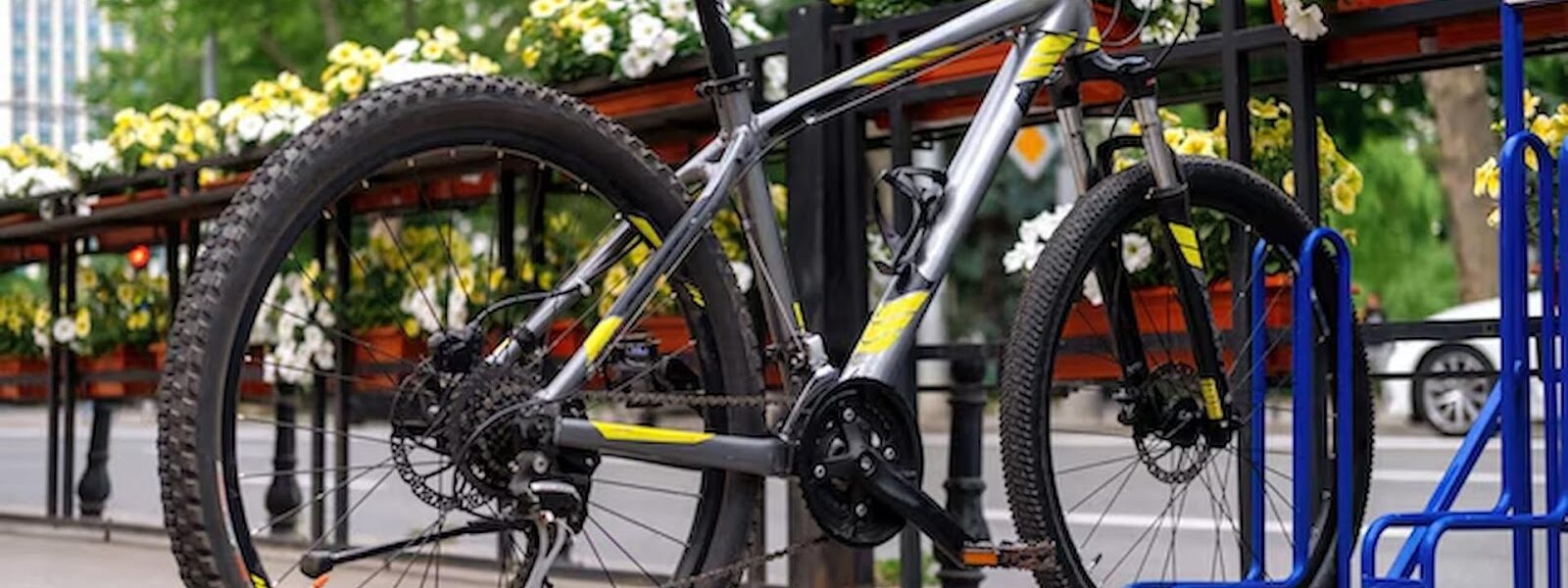When it comes to cycling, choosing the right bicycle stand is just as important as selecting the right bike. Whether you need a stand for home storage, quick repairs, or display your bike in a showroom, the right stand can significantly affect how efficiently you store, maintain, and display your bicycle. This guide will help you navigate the different types of bicycle stands and provide key factors to consider, ensuring that you make an informed decision based on your specific needs.
Why You Need a Bicycle Stand
A bicycle stand is more than just a storage solution. It serves several key functions that enhance the longevity of your bike:
- Proper storage: Keeping your bike upright prevents damage and prolongs its lifespan.
- Easy access for repairs: Some stands double as workstations, making it easier to perform maintenance and repairs.
- Organisation: Storing your bike properly keeps your space tidy and free from clutter.
Types of Bicycle Stands
Before choosing a stand, it’s important to understand the different types available. Each type is designed for a specific purpose, and the right one will depend on how you plan to use it.
1. Floor Bicycle Stands
Floor stands are among the most common types and come in various shapes and sizes. These stands are designed to keep your bike upright and are ideal for home storage. They often feature a simple design where you place the bike’s rear wheel into a holder that stabilises it.
- Best for: Casual cyclists, limited space.
- Pros: Easy to use, affordable, and space-saving.
- Cons: Not ideal for repair work.
2. Wall-Mounted Bicycle Stands
If you’re tight on space, wall-mounted stands are an excellent option. These stands attach to the wall and hold the bike by the frame, which allows you to free up floor space in your garage, apartment, or office.
- Best for: Small living spaces apartment dwellers.
- Pros: Space-saving, keeps your bike out of the way.
- Cons: It requires wall installation and may not be suitable for all bike types.
3. Repair Stands
A repair stand is a more specialised bicycle stand designed for cycling enthusiasts who need a stable platform for maintenance and repairs. These stands typically feature adjustable arms to hold the bike by the frame or seat post. Some repair stands even offer the ability to rotate the bike for easy access to all parts.
- Best for: Regular cyclists, bike mechanics, or anyone who does their own maintenance.
- Pros: Highly stable, versatile, and convenient for repairs.
- Cons: Usually more expensive and bulkier than other types.
4. Vertical Bike Stands
Vertical stands allow you to store your bike upright by balancing it on its back wheel. These stands are usually compact and ideal for situations where you want to minimise floor space usage.
- Best for: Tight spaces, apartments.
- Pros: Compact, easy to use.
- Cons: It may not work well with all bike types, especially heavier ones.
5. Bike Racks for Multiple Bikes
If you have multiple bikes, a multi-bike rack is the best option. These stands are designed to hold several bicycles, either by hanging them on hooks or placing them in separate slots. Some models are floor-mounted, while others are wall-mounted.
- Best for: Households with multiple bikes, bike shops, and storage facilities.
- Pros: Great for storing various bikes, saves space.
- Cons: Takes up more space than single-bike stands.
Key Features to Consider When Choosing a Bicycle Stand
When selecting the right cycle stand, there are several factors to keep in mind to ensure that it fits your needs and offers the best value. Here are the most important features to consider:
1. Weight Capacity
Not all bicycle stands are designed to handle the weight of all bike types. For example, a mountain bike with a heavy frame will require a sturdier stand than a lightweight road bike. Always check the weight capacity of a stand to ensure it can safely hold your bike.
- Tip: If you plan to store heavier bikes, opt for a stand that offers a higher weight limit.
2. Size and Storage Space
Space is a critical factor in choosing the right bicycle stand. A compact and foldable stand may be ideal if you store your bike in a small apartment. On the other hand, if you have a dedicated garage space, a larger repair stand might work better.
- Tip: Measure your space and determine whether you need a space-saving option or something larger for multiple bikes.
3. Stability
A stable stand ensures that your bike stays securely in place. If your stand is wobbly or unstable, it could lead to damage to your bike or injury. Look for stands with non-slip feet or sturdy materials like steel or aluminium.
- Tip: For a repair stand, look for one with a wide base to prevent tipping when the bike is mounted.
4. Adjustability
If you plan to use your stand for repairs, adjustability is crucial. A stand with adjustable height and angle allows you to position your bike in the most comfortable and accessible position for repairs and maintenance.
- Tip: Adjustable stands are especially useful for taller or shorter individuals, making repairs easier.
5. Durability
Durability is important, especially for outdoor use. Look for stands made from high-quality materials like stainless steel or powder-coated aluminium, which are more resistant to rust and wear.
- Tip: If you’re using your stand outdoors, consider a weather-resistant model.
6. Portability
Portability becomes a key factor for cyclists who travel frequently or need a stand on the go. Some stands are foldable and lightweight, making them easy to carry and store.
- Tip: If you’re looking for a portable stand, opt for one that is easy to fold and store without compromising on stability.
How to Choose the Right Bicycle Stand for Your Needs
Choosing the right bicycle stand comes down to understanding how you plan to use it. Below are some practical tips to help you choose the best stand based on your specific needs:
1. For Home Storage
If you’re looking for a stand to store your bike at home, a floor or wall-mounted stand is likely the best option. These are affordable, easy to use, and can help keep your bike out of the way. Consider a wall-mounted stand if you need to save floor space.
- Tip: Choose a stand that is sturdy enough to prevent your bike from tipping over.
2. For Regular Bike Maintenance
If you regularly perform maintenance on your bike, a repair stand is the ideal choice. It provides the necessary stability and adjustability for repairs, making it easier to work on your bike.
- Tip: Look for a repair stand with rotating capabilities for easier access to all areas of the bike.
3. For Multiple Bikes
If you have more than one bike, consider a multi-bike rack. These racks can be floor or wall-mounted and are designed to hold several bikes securely. Make sure to choose a model that accommodates your bike type, whether road, mountain, or hybrid.
- Tip: Look for a rack that allows you to store bikes vertically if you’re limited on space.
4. For Travel and Portability
If you’re a cyclist on the go, choose a portable bicycle stand. These stands are lightweight, foldable, and easy to transport, making them perfect for cyclists who frequently travel.
- Tip: Choose a compact model that folds easily for convenience during travel.
Conclusion
Choosing the right bicycle stand depends on your specific needs, space availability, and budget. By understanding the various types of stands, their features, and your intended use, you can make a well-informed decision that enhances the longevity of your bike and makes storage or repairs more efficient. Whether you need a simple stand for storage or a robust repair stand for regular maintenance, a bicycle stand will suit your requirements.





